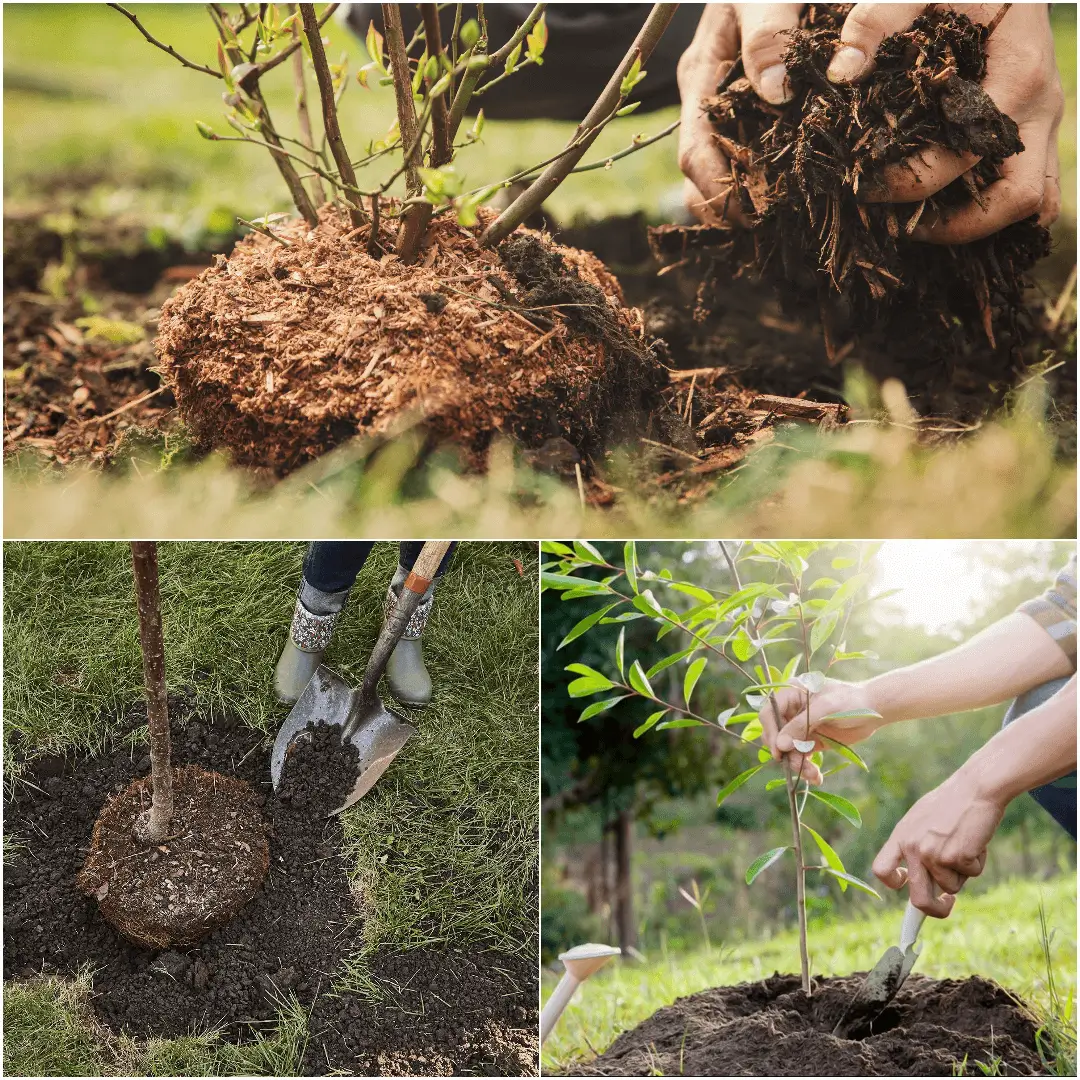Planting a tree might seem like a simple task, but knowing how to plant a tree the right way can make all the difference. Whether you’re planting your first sapling or adding another to your backyard forest, following the correct steps ensures the tree not only survives but thrives for years to come. Ready to learn? Let’s dive into it.
Importance of Planting a Tree
Why Trees Matter for the Environment
Trees are often called the “lungs of the Earth,” and that’s no exaggeration. They absorb carbon dioxide and release oxygen, which is vital for all living things. But that’s not all. Trees provide shade, reduce soil erosion, and offer habitats for countless wildlife species. Every tree you plant contributes to a healthier, greener planet.
Benefits of Planting Trees in Your Yard
Beyond environmental benefits, trees can significantly enhance your home’s landscape. They add beauty, provide cooling shade in the summer, and can even increase property value. Plus, who doesn’t love the idea of sitting under the shade of a tree you planted yourself?
Best Time to Plant a Tree
Why Fall is Ideal
Fall is hands-down the best time to plant trees. The cooler temperatures and increased rainfall provide the perfect conditions for roots to establish before the heat of summer. The more time between planting and summer, the better.
Early Spring as an Alternative
If you miss the fall window, don’t worry. Early spring is also a good time to plant. Just be mindful that the tree needs ample time to settle before summer stressors like heat and drought kick in.
Tools and Materials You’ll Need
Essential Tools for Digging and Planting
Before you get started, make sure you have a shovel, a watering can or hose, mulch, and the tree itself. You’ll also want gloves and a garden rake to smooth the soil afterward.
Choosing the Right Tree for Your Space
Different trees have different needs. Be sure to choose one that fits your climate, soil type, and space. Do a bit of research on the tree species to ensure it will thrive in your yard.
Preparing the Planting Hole
How Wide and Deep Should the Hole Be?
A common mistake is digging the hole too deep. Aim for a hole that’s three times as wide as the root ball but no deeper than the tree was in its original container or environment. This allows roots to spread out, which is key to the tree’s stability.
Identifying the Tree’s Trunk Flare
Look for the trunk flare — the area where the trunk transitions to the roots. This should always be above the soil line to prevent rot and disease.
Planting the Tree High
Why Elevation is Crucial for Tree Health
When planting, it’s better to place the tree slightly higher than ground level. Around 25% of the root ball should sit above the soil line. This helps avoid water pooling around the roots, which can lead to rot.
Steps for Planting Above Grade
Once the tree is positioned, gradually taper the surrounding soil to cover the roots. This prevents the tree from sinking below grade as the soil settles over time.
Inspecting and Preparing the Roots
Identifying Rootbound Trees
If your tree has been sitting in a pot for too long, the roots may have started growing in circles. This is called being rootbound, and it can stunt the tree’s growth.
Breaking Up the Root Ball to Encourage Growth
Before planting, gently tease apart the roots to break the circular pattern. In severe cases, you may need to slice the root ball vertically with a pruning saw. It’s better to do this now than let the tree struggle later.
Backfilling the Hole with Native Soil
Why You Shouldn’t Amend the Soil
It might seem like a good idea to add compost or fertilizer to the soil, but this can actually hinder root growth. Instead, use the native soil to backfill the hole. This encourages the roots to grow outward, establishing a stronger base.
Best Practices for Backfilling
Break up any large clumps of soil as you backfill. This ensures the roots can easily penetrate and establish themselves.
Eliminating Air Pockets
The Role of Water in Removing Air Pockets
Air pockets can dry out the roots and cause the tree to fail. After you’ve backfilled about halfway, blast the soil with water. This helps settle the soil and eliminate any air pockets around the roots.
How to Water Effectively During Planting
Repeat the watering process after you’ve filled the hole completely. Water deeply to ensure the soil is well-saturated.
Adding Mulch for Moisture Retention
Types of Mulch to Use
Organic mulches like shredded leaves, bark, or wood chips are great choices. Mulch helps retain moisture and regulates soil temperature, both of which are critical for young trees.
How Much Mulch is Necessary?
Spread a two-inch layer of mulch around the tree, extending out to the drip line. However, keep the mulch two inches away from the trunk to prevent rot.
Watering Your Newly Planted Tree
Importance of Slow and Deep Irrigation
Watering deeply encourages roots to grow deeper, making the tree more resilient. A slow, deep soak is more effective than frequent shallow watering.
Watering Schedule for New Trees
For the first week, water daily. After that, reduce it to every other day for the next two weeks. Continue scaling back as the tree becomes established, but keep an eye on its needs.
Monitoring Your Tree After Planting
Recognizing Signs of Distress
Yellowing leaves, excessive leaf drop, or dry branches can all indicate issues with your tree. Pay attention to these signs and adjust your watering or care routine accordingly.
How to Adjust Watering Based on Tree’s Condition
If the soil is constantly wet, you might be overwatering. On the other hand, if the leaves are brown and crispy, the tree needs more water.
Common Mistakes to Avoid
Overwatering vs. Underwatering
Finding the right balance with watering is tricky but essential. Overwatering can drown the roots, while underwatering will cause the tree to dry out.
Planting Too Deep or Too Shallow
Always make sure the tree’s trunk flare is visible. Planting too deep can suffocate the tree, while planting too shallow can expose the roots.
Fertilizing Newly Planted Trees
When and How to Fertilize
It’s tempting to fertilize a newly planted tree right away, but it’s better to wait. Newly planted trees are focusing on root establishment rather than top growth, and fertilizing too soon can stress the tree. Wait until the second year before adding any fertilizers unless the soil is particularly poor or lacking in nutrients.
Choosing the Right Fertilizer
When it’s time to fertilize, choose a slow-release fertilizer that is specifically designed for trees. Look for a balanced formula, such as 10-10-10, which contains equal parts nitrogen, phosphorus, and potassium. Avoid over-fertilizing, as it can cause excessive top growth at the expense of root development.
A Long-Lasting Tree for Generations
Planting a tree may seem straightforward, but as you can see, there are many factors to consider to ensure its long-term health and success. From selecting the right time and location to preparing the soil and monitoring the tree after planting, every step is crucial in giving the tree the best chance to thrive. Trees provide not only environmental benefits but also personal rewards, from cooling shade to increased property value. By following these steps, you can enjoy watching your tree grow and flourish for years to come.
FAQs
How do I plant my own tree?
To plant your own tree, start by selecting the right spot where the tree will receive enough sunlight and space to grow. Dig a hole that is three times as wide as the root ball but no deeper than the height of the root ball. Place the tree in the hole with the trunk flare slightly above ground level. Backfill the hole with the native soil, water it thoroughly to remove air pockets, and add mulch around the base, leaving space around the trunk. Finally, water the tree regularly until it becomes established.
How do you start a tree?
You can start a tree either from a seed, sapling, or a young tree from a nursery. For seeds, plant them in nutrient-rich soil, keep the soil moist, and ensure they receive sunlight. Saplings or nursery trees require proper planting. Dig a hole, place the tree at the right depth, and follow watering and care guidelines. In either case, be patient, as trees take time to grow.
How do you grow up trees?
Growing up a tree successfully involves regular care and attention. After planting, water it consistently, especially during the first year, to help establish its root system. Keep the area around the tree weed-free, mulch to retain moisture, and monitor for any signs of stress or pests. As the tree matures, periodic pruning may be necessary to maintain its shape and health.
How do you grow a good tree?
To grow a good tree, start by choosing the right species for your climate and soil type. Plant it at the proper depth, ensuring the root ball is not buried too deep. Water regularly but avoid overwatering, as it can lead to root rot. Use organic mulch to help retain moisture and protect the roots. With proper care—watering, pruning, and monitoring for pests—a healthy tree will grow strong and provide benefits for many years.


